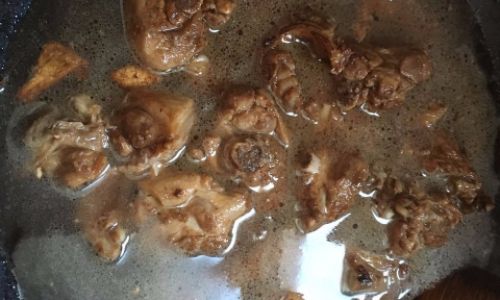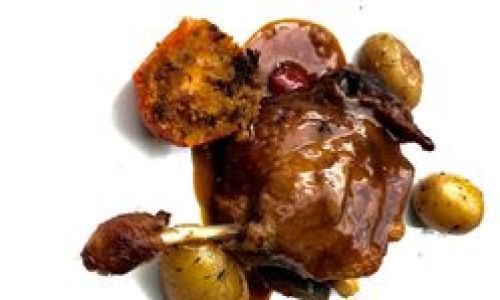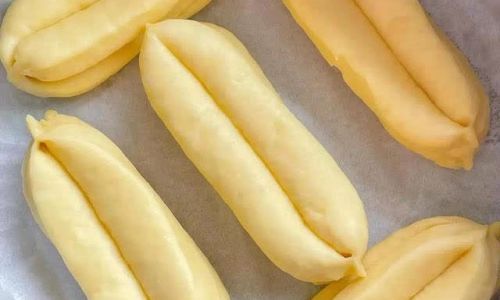Table of content
Cooking duck legs can be a delightful culinary adventure, but it often comes with a challenge: how to eliminate the fishy odor while ensuring the dish remains mouthwateringly delicious. Duck meat, especially the legs, tends to have a stronger flavor profile compared to other poultry, which can sometimes be off-putting if not handled properly. However, with the right techniques and ingredients, you can transform duck legs into a dish that is both aromatic and savory, leaving your guests asking for seconds. This article will guide you through the step-by-step process of achieving perfectly cooked duck legs that are free from any fishy taste and bursting with flavor.
Understanding Duck Meat and Its Unique Flavor
Duck meat has a rich, fatty texture that gives it a distinct, somewhat gamey flavor. This richness is what makes duck dishes so sought after in gourmet cuisine, but it’s also the source of its potential fishiness. The key to cooking duck legs without the unwanted fishy aroma lies in proper preparation, seasoning, and cooking methods.
Step 1: Proper Preparation
1 Choosing the Right Duck Legs
Start by selecting high-quality duck legs. Fresh or frozen, they should have a firm texture and a clean, slightly pinkish hue. Avoid legs that appear discolored or have an unpleasant odor. Organic or free-range ducks are often preferred for their superior taste and texture.

2 Thorough Rinsing and Patting Dry
Rinse the duck legs under cold running water to remove any blood or impurities. Pat them dry thoroughly with paper towels. Moisture can lead to steam during cooking, which can intensify unwanted flavors.
3 Trimming Excess Fat
While duck fat is delicious and essential for cooking, too much can make the dish greasy. Trim away any excess fat, especially from the skin, but leave enough to keep the meat moist and flavorful during cooking.
Step 2: Seasoning for Flavor and Odor Neutralization
1 Basic Seasoning
Season the duck legs generously with salt and pepper. Salt helps draw out moisture and enhances flavor, while pepper adds a spicy kick.
2 Acidic Ingredients
Acidic components like lemon juice, vinegar, or wine can help neutralize unwanted odors. Marinating the duck legs in a mixture of these acids, along with garlic, shallots, and herbs like rosemary or thyme, can work wonders. Let the duck legs sit in the marinade for at least an hour, preferably overnight in the refrigerator for maximum effect.
3 Aromatics
Adding aromatics such as ginger, garlic, onions, and carrots to your marinade or cooking process can further mask any unwanted flavors and add depth to the dish. These ingredients not only enhance the taste but also contribute to a pleasant aroma during cooking.
Step 3: Cooking Techniques for Success
1 Searing the Duck Legs
Start by searing the duck legs in a hot pan. This not only locks in juices but also creates a beautiful caramelized crust that adds layers of flavor. Use a pan that can withstand high temperatures and has a good layer of fat (duck fat is ideal) to prevent sticking and ensure even cooking.
2 Slow Cooking for Tenderness
After searing, transfer the duck legs to an oven-safe dish and cook them at a low temperature (around 325°F or 165°C) for about an hour and a half to two hours, depending on size. This slow cooking method allows the fat to render out, making the meat tender and flavorful without being overly greasy.

3 Basting and Monitoring
Periodically baste the duck legs with their own juices or a prepared sauce to keep them moist and flavorful. Monitoring the cooking process is crucial to prevent overcooking, which can dry out the meat and intensify unwanted flavors.
Step 4: Finishing Touches
1 Resting the Meat
Once cooked, let the duck legs rest for at least 10-15 minutes. This allows the juices to redistribute, ensuring a juicy, tender bite every time.
2 Sauce and Garnish
A rich, flavorful sauce can elevate your duck legs to the next level. A simple reduction of the cooking juices with a splash of wine, stock, and a touch of butter can create a luxurious finish. Garnish with freshly chopped herbs like parsley or chives for a burst of color and freshness.
Step 5: Serving Suggestions
Duck legs pair wonderfully with a variety of sides. Mashed potatoes can soak up the delicious juices, while roasted vegetables or a crisp salad provide a refreshing contrast. For a more indulgent meal, serve them with a creamy polenta or risotto.
Conclusion
Cooking duck legs without the fishy taste and making them delicious is an achievable goal with the right techniques and ingredients. By properly preparing the duck legs, using strategic seasoning, and employing effective cooking methods, you can transform this potentially challenging ingredient into a dish that is sure to impress. Remember, the key to success lies in patience, attention to detail, and a willingness to experiment with different flavors and cooking techniques. With practice, you’ll soon be mastering the art of cooking duck legs that are both non-fishy and incredibly tasty, delighting your taste buds and those of your loved ones. Happy cooking!






0 comments